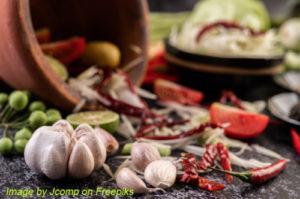Another tasty version of lechon kawali with a cucumber vinegar sauce. But you can use any kind of dipping sauce if you want like lechon sauce or ketchup. I think this is not much different to the usual lechon kawali that you used to cook. I just added some lemon grass on the pot together with the spices and aromatics when boiling the pork belly slabs until tender.
It does really improve the aroma and the taste when you include lemongrass in meat dishes as it helps reduce the gamy taste and odor of meat. And regarding the dipping sauce, the addition of cucumber to the vinegar make the dipping sauce appetizing because it enhances the flavor of fried and grilled meat specially the Pinoy barbecue on bamboo sticks skewers. Try it! I’m sure you are going to love it!
Lechon Kawali with Cucumber Vinegar Sauce: A Crispy Treat from My Family’s Kitchen
If there’s one dish that instantly brings me back to my childhood weekends, it’s lechon kawali. Just the sound of pork crackling in hot oil, the sharp sizzle filling our kitchen, and that unmistakable savory aroma wrapping itself around the house — these are the moments I’ll never forget. My Tita Ludy, who always had a knack for turning simple meals into feasts, used to say that no celebration was complete without a good platter of crispy pork belly.
I still remember how she made her dish extra special, with a secret trick passed down by my Lolo Ben, who used to run a small carinderia in Laguna. The trick? Adding tanglad — lemongrass — into the boiling pot when cooking the pork. Back then, I didn’t understand why this mattered. But after years of cooking it myself, I now know that this humble stalk of grass works wonders in removing any unwanted gamy odor from the meat while infusing it with a subtle citrusy aroma.
What Makes This Version of Lechon Kawali Stand Out
Most people already have their tried-and-true way of making this beloved crispy pork dish, but what sets this version apart is the pairing: a refreshing cucumber vinegar sauce. I got the idea from my Kuyang Emil, who spent a few years working in a seafood restaurant in Iloilo. He swore by the combination of fried meats with tangy, cucumber-infused vinegar dips — something they often served alongside grilled bangus or inihaw na liempo.
This sauce adds a crunchy, cool contrast to the rich and fatty pork, balancing every bite with just the right amount of acidity and freshness. It’s such a simple addition, but believe me, it transforms the dish entirely.
Tips to Achieve the Perfect Crispy Skin
Getting that irresistible golden-brown skin is the dream of every home cook trying their hand at lechon kawali. I learned (the hard way!) that there are a few non-negotiable steps if you want that signature crunch.
After boiling the pork belly until tender, you need to dry the skin completely. My Ate Nita always said, “The drier the skin, the crunchier the bite.” This is why after boiling, we let the slab sit under a fan or in front of a window to air-dry. A quick brush of vinegar on the skin helps tighten it up, which also contributes to that blistered, crackly texture we all love.
Another crucial technique — and one I learned from my cousin Boyet, who runs a small lechon house in Cavite — is double frying. The first fry cooks the meat through and sets the skin. The second fry, done at a higher temperature, is what makes the skin puff up and turn glassy-crisp. Skipping this step could leave you with chewy or leathery skin — something no one wants when serving lechon kawali.
A Brief History of Lechon Kawali
Before we dive deeper into cooking tips, let me share a little history for those new to this dish. Lechon kawali is believed to have evolved as a home-style shortcut to whole roasted lechon, which is traditionally cooked over a charcoal pit for hours. Since roasting a whole pig isn’t practical for everyday meals, Filipino cooks devised this stovetop version using smaller cuts of pork belly — the part with just the right ratio of meat, fat, and skin.
The word “kawali” itself refers to the wide pan used for frying, though nowadays, any deep pot will do the trick. It’s this adaptability that made it a staple in Filipino households, served during Sunday lunches, fiesta gatherings, or whenever there’s leftover pork belly from the market.
How to Serve Lechon Kawali with Cucumber Vinegar Sauce
Once your pork belly is perfectly crispy and golden, the real fun begins — assembling your dipping sauce. This cucumber vinegar sauce couldn’t be easier to make, but its bright, tangy flavors add so much life to the dish. Simply mix vinegar, chopped cucumbers, garlic, sugar, and salt until everything melds together. My Tita Ludy liked to throw in a few slices of red chili for extra heat, but that’s entirely up to you.
Pair this with steaming hot rice and maybe some freshly sliced tomatoes on the side, and you’ve got a meal that’s simple yet festive. In our family, lechon kawali was always served with plenty of rice, since every piece of crispy skin deserved a perfect mouthful of fluffy white rice to go with it.
Food for Thought: The Role of Dipping Sauces in Filipino Cuisine
In Filipino cooking, a good sawsawan is just as important as the dish itself. Dipping sauces aren’t just condiments — they’re conversation starters. In our family, we’d sit around the table, each person tweaking their dipping sauce to their liking — more vinegar, less sugar, extra chili, or a splash of soy sauce.
This love for dipping sauces reflects a larger truth about Filipino food: it’s meant to be communal, interactive, and endlessly adaptable. So while this fried pork with cucumber vinegar sauce is how we enjoy it in my family, feel free to swap the sauce for the sweet-savory lechon sauce, banana ketchup, or even spicy suka.
The beauty of it lies not just in its crunch or flavor, but in the memories it creates — the laughter in the kitchen, the stories passed down while cooking, and the satisfaction of sharing a meal made with love.
Whether you’re a beginner or a seasoned cook, this dish is one of those recipes that feels like home. And who knows? Maybe one day, you’ll pass down your own family’s version to the next generation too.
How to Cook Lechon Kawali with Cucumber-Vinegar Sauce
Ingredients
- 1 & 1/2 kilo pork belly slab
- 2 stalks lemon grass tied into a knot
- 2 Tbsp. salt
- 1 Tbsp. whole black peppercorns
- 3 pcs bay leaves
- 4 cloves garlic crushed
- fine salt for rubbing the pork
- water for boiling
- vinegar for brushing the skin
- 3 to 4 cups cooking oil for deep frying
For the Vinegar-Cucumber dipping sauce:
- 1/2 cup palm vinegar
- 1 piece red onion chopped
- 1/2 cup sliced cucumber
- 1 Tbsp. sugar
- 1/4 tsp. salt
- 1/4 tsp. black pepper powder optional
Instructions
How to Cook Lechon Kawali with Cucumber-Vinegar Sauce
- Wash and drain the pork belly slab. Remove hairs in the skin by using a shaving razor or sharp knife.
- Fill the large pot with water just enough to cover the meat. Bring to a boil then add in lemon grass, garlic, black peppercorns, salt and bay leaves.
- Put the pork belly slab into the pot and let it boil in medium heat for 1 to 1 & 1/2 hours or until the pork is tender.
- Remove from pot and drain in a colander. Set aside and let it cool down.
- Poke the skin with a fork and brush with vinegar then let it dry. Rub with fine salt the skin and the entire surface of the pork.
- Heat cooking oil in a pot deep enough to fry the pork belly slab. Fry the pork until golden brown then remove from oil and drain in a colander. Let it cool for 10 minutes.
- Then heat the oil again and re-fry the pork belly until golden brown and the skin is crispy.
- Remove from oil and let it cool. Then slice the lechon kawali and serve with cucumber-vinegar dipping sauce.
- To make the dipping sauce: Combine all the ingredients in a bowl and stir until the sugar is dissolved.
Video
Notes
Cooking Tips:
Dry the Pork Skin Thoroughly for Maximum Crispiness
After boiling the pork belly, make sure to pat the skin dry with paper towels and let it air-dry for at least an hour. The drier the skin, the better it will crisp up when fried, creating that signature crackling texture. This simple step is one of the biggest secrets to achieving this fried pork with a shatteringly crispy skin.Use Lemongrass to Add Aroma and Remove Gamy Odor
Adding a few stalks of crushed lemongrass to the boiling water infuses the pork with a fresh, citrusy aroma. It also helps eliminate any unwanted porky smell, leaving you with cleaner-tasting meat. This trick has been passed down in many Filipino kitchens, especially in rural areas where meat tends to have a stronger scent.Double Fry for Perfectly Golden and Extra Crispy Skin
Frying the pork belly twice is the key to achieving that beautifully golden crust and ultra-crispy skin. The first fry cooks the pork through and starts the crisping process, while the second fry — done at a higher temperature — creates the final blistered, crunchy finish. Skipping this double-fry technique often results in skin that’s chewy or unevenly crispy.






Hi Manny! thanks for sharing this tasty version of lechon kawali! I love the cucumber sauce! Absolutely fantastic!
Hi Tony! thanks for dropping by and sharing your thoughts! ðŸ˜